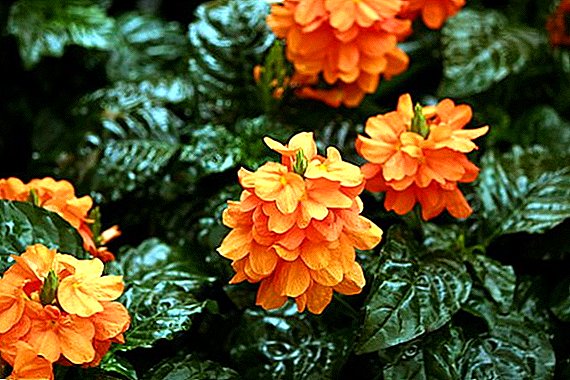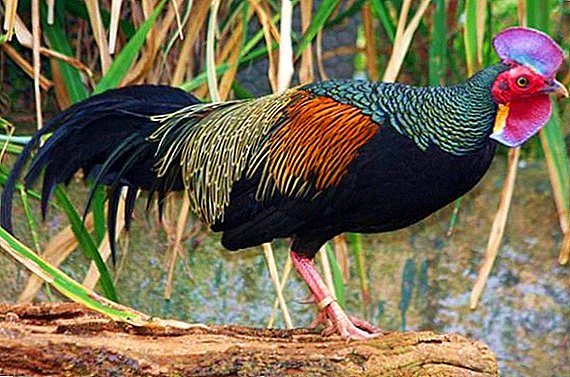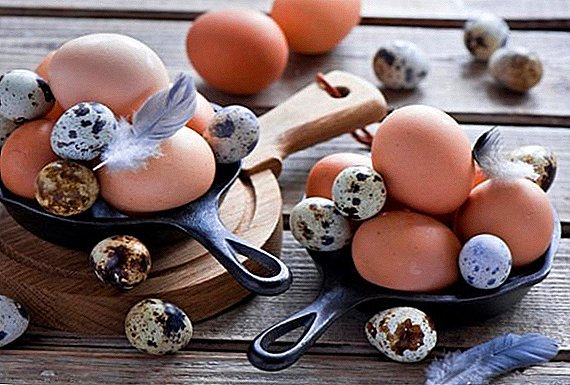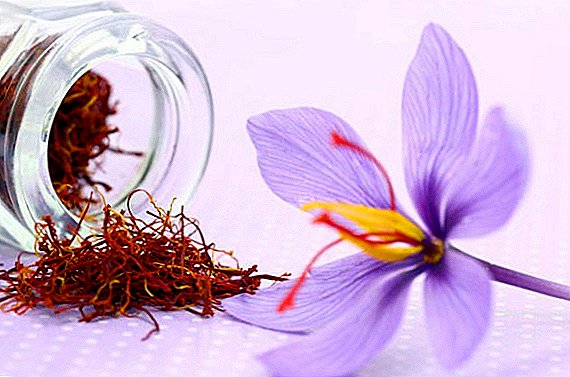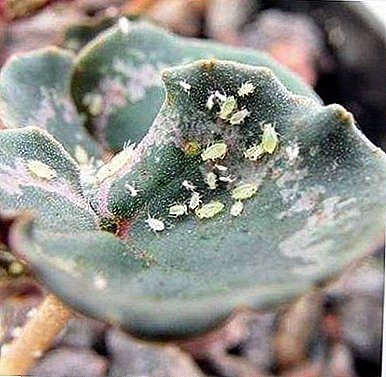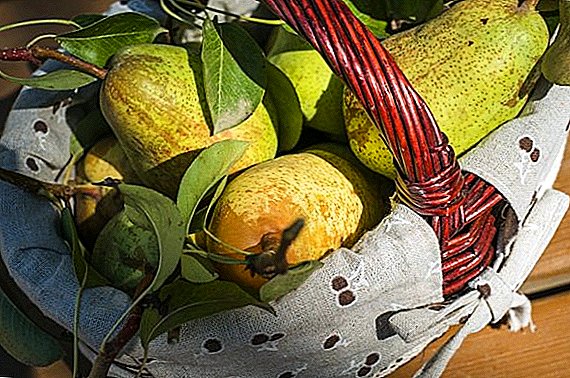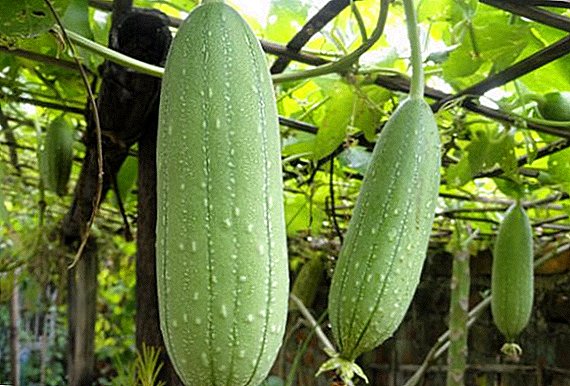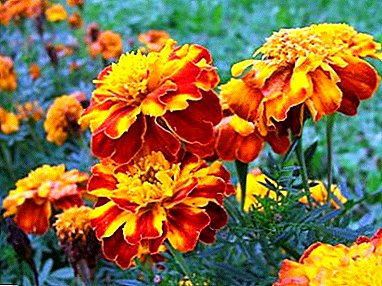
Marigolds - flowers come from America, conquered, perhaps, all the gardens of our country. In some places, they are known as "Chernobrovtsy". The plant attracts gardeners and gardeners for its simplicity, ease of cultivation and the beauty of flowering. The specific scent emitted by marigold flowers is an excellent means for scaring off parasites.
Although the plant and unpretentious, but to feed it after planting experts still recommend. In gratitude, the marigolds will repay you with a longer flowering.
How do they look?
Marigold called so due to the amazing velvety shade of red-brown petals. These flowers can be from several centimeters to one meter tallIt all depends on the variety. In the wild, these plants can most often be seen in Latin America. Most varieties are cultivated by breeders in Brazil, Mexico and Chile. Learn more about marigold varieties, as well as see the description and photo of flowers here, and about the features of caring for a stunted view, read here.
In Russia, “marigold erect” are most often encountered, they are less whimsical to climatic conditions. In general, for the healthy growth and development of these colors, the following conditions must be met:
- frost protection when planting in early spring;
- night temperature not less than 5 degrees Celsius;
- watering and feeding to accelerate development.
Watering
 Marigolds are considered unpretentious plants, but in order for the flowers to look healthy and vibrant, you need to follow the recommendations for watering.
Marigolds are considered unpretentious plants, but in order for the flowers to look healthy and vibrant, you need to follow the recommendations for watering.
During the period of active plant growth, regular and abundant (within reasonable limits) watering is necessary. Water experienced gardeners advise evenly, avoiding water stagnation. Otherwise, the root system may rot.
When the growth of flowers stops, you should reduce the frequency of hydration. During the summer heat, watering marigolds is recommended in the evening when the heat subsides.
Is it necessary to fertilize for abundant flowering?
Marigolds are fully capable of growing, developing and blooming without fertilizing. For rapid growth and the beginning of flowering it is necessary to regularly loosen the topsoil. This procedure will allow you to saturate the soil with oxygen and provide respiration to the root system. In order to provoke active flowering, pruning of marigolds is also necessary. It is necessary to remove old inflorescences in time.
According to experts, although marigolds and unpretentious, but a three-time feeding will not be superfluous. With its help, the soil will be enriched with useful organic substances and microelements, which will help the plants to form brighter and more volume flower buds. Also, fertilizers will increase the period of flowering itself (you can find out about what marigolds need for flowering here).
How to do it right?
Gardeners often "by eye" determine the frequency and amount of marigold fertilizer. Many of them practice the so-called triple feed. However, when sowing seeds and planting plants on open ground, fertilizer is not recommended.
The first feeding with nutrients is carried out already when the flowers have grown strong and settled down, that is, not earlier than 14 days after transplanting onto the street.
Triple feeding, which will help you to grow marigolds faster and grow more blooming, is carried out as follows:
- First time marigolds fertilize immediately after the seedlings reach a height of 10 centimeters. For sub-feed use urea diluted with water. The proportion for the solution is 1 tablespoon of the substance per 10 liters of water.
- Second feed marigolds are produced when the first buds begin to appear on the flowers. For fertilizer use a solution of superphosphate and potassium sulfate in water. The proportion is the same, a tablespoon of each drug per 10 liters of water.
- Third time plants are fed at the beginning of the flowering period, in order to increase its time. To do this, in 10 liters of water dilute 1 tablespoon of nitrophoska.
Additional feeding
 As already mentioned, marigolds are considered extremely unpretentious plants. In rare cases, they can also become the object of attack by parasites and other ailments accompanying the life of flowers.
As already mentioned, marigolds are considered extremely unpretentious plants. In rare cases, they can also become the object of attack by parasites and other ailments accompanying the life of flowers.
To cope with parasites, bacteria and fungi will help a tool called "Hom". Copper, which is part of it, has a negative effect on various sores of colors.
- 40 grams of "Homa" (2 tablespoons with a slide) is mixed with 10 liters of water.
- The resulting solution is sprayed marigolds.
Important! Conducting such therapy is possible only before the flowering process begins. Otherwise, the tool will damage the flowers and plants will become useless.
What else can you use?
Flower growers use not only the method of "triple feed". Some do it once, and someone does fertilize with every watering of marigolds. For these purposes, you can use different fertilizers:
- Composite products containing nitrogen, phosphorus, potassium. This is, for example, the well-known line of Agrikol products.
- Are used potassium sulfate, superphosphate and urea. However, when working with such fertilizers, it is important to strictly follow the instructions for use and the recommended dosage. Otherwise, marigolds can do more harm than good.
- Adherents of organic farming is used to feed flowers herbal infusions. For example, a nettle infusion would be a good remedy. Grass (if desired) is crushed, filled with water and left outside for 2-3 days. As soon as the "drug" ferments, they water it with marigolds and any other flowers.
- Also contributing to the growth of flowers has a positive effect on the ground. ashes. With the subsequent loosening of the soil is saturated with useful organic substances that feed the marigold root system.
Marigolds will positively accept any type of fertilizer if they are diluted according to the dosages set by the manufacturer. The only top dressing that is contraindicated for these flowers is humus.
Priming
 Since ancient times, marigolds are perceived by people as a solar flower. Perhaps this is due to their shade. There is even a specially bred marigold variety, which is called the "Solar ball". Accordingly, these Plants are light-loving, for their landing it is desirable to choose a sunny place (Details on how to properly plant and care for marigolds at home and in the open field, read here).
Since ancient times, marigolds are perceived by people as a solar flower. Perhaps this is due to their shade. There is even a specially bred marigold variety, which is called the "Solar ball". Accordingly, these Plants are light-loving, for their landing it is desirable to choose a sunny place (Details on how to properly plant and care for marigolds at home and in the open field, read here).
However, in the shady part of your garden they will grow and will delight you with their bright buds. However, in this case, the flowers themselves will look sickly, and the flowering period will be short. Almost all species of marigolds love open terrain. They prefer a neutral loamy soil that is maintained at an optimum level of moisture.
Marigold well experienced the process of transferring seedlings to open ground due to the large diameter of the trunk and an extensive root system (for details on how and when to plant marigold seedlings, you can find out here). When planting in a flower garden should adhere to the following recommendations:
- Representatives of high varieties of marigolds at a distance of at least 40 centimeters from each other.
- For medium-sized flowers, the optimal distance will be 30 centimeters.
- Low marigolds are planted at a distance of 20 centimeters between adjacent plants.
Immediately after transplanting the plants, it is recommended to pour plenty of warm water.
Conclusion
Properly produced marigold feed with useful substances and during the appropriate period for this, will allow you to enjoy bright colors for a longer time. It is recommended to introduce nutrients in the evening or early in the morning, in which case they will have time to soak into the soil and get into the root system before the onset of heat.
According to reports by experienced gardeners, it is better to produce food after good watering. Similar requirements apply to natural rainfall: fertilizer will act more efficiently if you apply it directly after the rain, and not before it.


